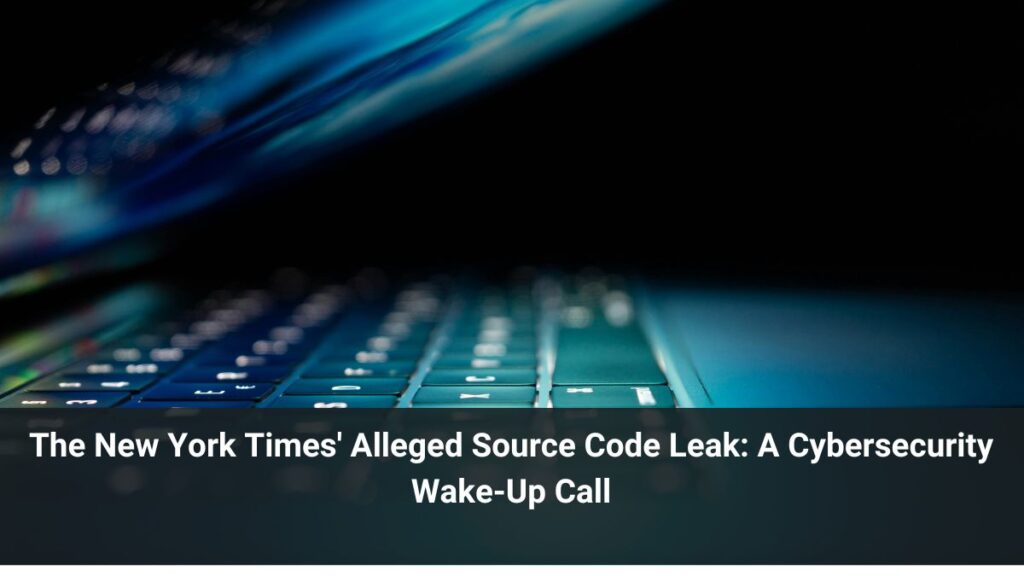The Dark Underbelly of the Internet Strikes Again
In a startling revelation that has sent shockwaves through the media industry, an anonymous user on the notorious 4chan message board claims to have leaked a staggering 270GB of internal data from The New York Times, including source code, web assets, and potentially sensitive information. This alleged breach, if proven true, could have far-reaching consequences for the esteemed newspaper and serve as a sobering reminder of the ever-present cybersecurity threats lurking in the digital realm.
As someone who has closely followed the evolution of cybersecurity and the relentless efforts of malicious actors to exploit vulnerabilities, this incident strikes a chord of both concern and intrigue. The sheer audacity of the alleged leak, coupled with the infamous reputation of 4chan, paints a vivid picture of the dark underbelly of the internet – a place where anonymity reigns supreme, and nefarious activities thrive in the shadows.
The Scope of the Alleged Leak: A Treasure Trove for Cybercriminals
According to the anonymous 4chan user, the leaked data encompasses a vast array of assets, including “basically all source code belonging to The New York Times Company.” This purported treasure trove is said to consist of approximately 5,000 repositories and a staggering 3.6 million files, now allegedly available for download on peer-to-peer networks.
While The Register has acknowledged seeing a list of the purported leaked files, the legitimacy of the claim remains unverified, and The New York Times has yet to respond to inquiries regarding the matter. However, if the leak is indeed authentic, the implications could be far-reaching, given the diverse nature of the allegedly stolen data.
From the blueprints of the widely popular online word game Wordle to email marketing campaigns and advertising reports, the scope of the alleged leak seemingly encompasses a vast array of sensitive and proprietary information. The leaker even claims that less than 30 repositories are encrypted, further compounding the potential risk of exposure.
Echoes of Past Attacks: A Recurring Nightmare
For The New York Times, this alleged breach is a chilling echo of past cybersecurity incidents that have plagued the organization and other media outlets. In 2013, the newspaper, along with several other publications, fell victim to a series of attacks by a hacker group calling themselves the Syrian Electronic Army. During these incidents, readers were temporarily denied access to websites, and pages were defaced by the intruders, causing significant disruptions.
The Register itself was not spared, narrowly avoiding a spear-phishing attack by the same group, which prompted the implementation of mandatory multi-factor authentication for added security. Fast forward to 2016, and The New York Times, along with other American news organizations, faced another breach, this time allegedly orchestrated by suspected Russian cyber-spies who gained access to email inboxes.
These past incidents serve as a stark reminder of the persistent and ever-evolving nature of cyber threats, underscoring the importance of robust cybersecurity measures and vigilance in the face of malicious actors.
Safeguarding the Fourth Estate: A Call to Action
As we grapple with the potential fallout of this alleged leak, it is crucial to recognize the vital role that media organizations like The New York Times play in upholding the principles of a free and independent press. The integrity and security of their operations are not just a matter of protecting proprietary information but also safeguarding the very foundations of democracy and the free flow of information.
This incident should serve as a wake-up call for all organizations, regardless of size or industry, to prioritize cybersecurity measures and adopt a proactive approach to mitigating risks. Implementing robust access controls, regular security audits, and employee training on best practices are just a few steps that can help fortify defenses against cyber threats.
Moreover, collaboration between media outlets, cybersecurity experts, and law enforcement agencies is paramount in combating these malicious activities. By fostering a culture of shared intelligence and collective vigilance, we can better identify and respond to emerging threats, ultimately protecting the integrity of our information ecosystems.
The Road Ahead: Resilience and Adaptation
As we navigate the uncharted waters of this alleged breach, it is essential to maintain a level-headed approach and not succumb to panic or misinformation. The New York Times, with its storied history and reputation for excellence, has weathered numerous challenges throughout its existence, and this incident, should it prove to be true, will undoubtedly test the organization’s resilience and adaptability.
While the potential consequences of this leak cannot be understated, it also presents an opportunity for the media industry and the cybersecurity community to come together, learn from this experience, and fortify their defenses against future threats. By embracing transparency, fostering collaboration, and continuously evolving their security protocols, organizations can not only mitigate the risks posed by cybercriminals but also maintain the trust and confidence of their audiences.
In the digital age, where information is currency and cybersecurity is paramount, incidents like this alleged leak serve as a stark reminder that complacency is not an option. It is a call to action for all of us – individuals, organizations, and governing bodies alike – to remain vigilant, proactive, and steadfast in our commitment to protecting the integrity of our digital ecosystems.
So, let us embrace this challenge as an opportunity to learn, adapt, and emerge stronger, more resilient, and better prepared to safeguard the principles that underpin our free and open society. For it is only through collective effort and unwavering dedication that we can confront the ever-evolving cyber threats and secure our digital future.

